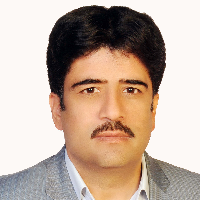Analysis of structural changes in the landscape and urban development patterns using multi-time satellite imagery- Case study: Mashhad Metropolitan
Determining landscape changes and the impact of urban development requires analyzing land surface changes and identifying appropriate algorithms. And it cannot be ignored that traditional methods for examining land use change and land cover, such as land surveying, are generally time-consuming and costly and require special skills. In this regard, the advent of remote sensing techniques, GIS has enabled researchers, planners and city managers to have a comprehensive view of land and land use change over time at a lower cost. However, these tools alone cannot describe the main trends and patterns of the city and urban development; Therefore, a combination of land use metrics and development index was proposed, which, along with remote sensing and GIS, lead to more desirable and accurate results. As a result of the present study, with the aim of analyzing the structural changes of the landscape and urban development patterns of Mashhad city using multi-time satellite images during the years 2000, 2010 and 2020 has been done. Also, in this regard, the main research questions are as follows: 1- Which direction will the growth and development of Mashhad city from 2000 to the horizon of 2040? 2- What kind of growth has followed the expansion of Mashhad from 2000 to 2040?
The present study is descriptive-analytical in nature. Information was prepared and adjusted through Landsat TM satellite images of 2000 and 2010, OLI sensor for 2020. Before performing the operations related to image processing, radiometric and atmospheric corrections were used using ENVI5.3 software and the FLAASH method was used for atmospheric correction. The images were then categorized using the maximum probability algorithm. In this method, educational samples were used to classify the pixels. Markov chain model in TERSET software was used for prediction on horizons 2030 and 2040. Then the generated maps were entered into FRAHSTATS4.2 software to measure the metrics of the landscape. Also, the Urban Growth Type Outlook Development Index (LEI) was evaluated using GIS software.
According to the land use map prepared for a period of 20 years, land related to the city in this period for the city of Mashhad due to population growth and demand for land as a result of urbanization growth in recent decades has the most area changes. So that the area of these lands has increased from 7% in 2000 to 12% in 2020 and this shows a 5% growth in the land area of this land use during this period. Agriculture and gardens from 2000 to 2020 has had an increasing trend 1. Therefore, the area of this user has increased from 11% in 2000 to 17% in 2010 and this shows a 6% growth in the area of this user. But from 2010 to 2020, the area of agricultural use and gardens has been drastically reduced. As a result, the area of this user in 2010 is equal to 17% and for 2020 is equal to 8%, which indicates a 9% decrease in the area of this user. Desert land use has been declining over the period, with a 4% reduction in area. The use of rangelands has not changed much during this period. The analysis of metrics on the surface of the land for the horizon of 2030 Mashhad showed that the area of this city will not change. The number of spots will decrease, indicating that the shape of the city will become more cohesive over time. The index of the largest spot and the density of the margin will have a decreasing trend, and this indicates that the city will become more cohesive on the horizon of 2030. Landscape shape index will have a decreasing trend. Also, the analysis of metrics on the surface of the land for the horizon of 2040 Mashhad showed that the area of this city will not change. The number of spots will decrease, indicating that the shape of the city will become more cohesive over time. The index of the largest spot and the density of the margin will have a decreasing trend, and this indicates that the city will become more cohesive on the horizon of 2030. Landscape shape index will have a decreasing trend.
In examining the first question based on the growth and development of the city of Mashhad from 2000 to 2040, which direction will it be? According to the maps classified in a period of 20 years and the projected maps for the horizons of 2030 and 2040 for the city of Mashhad, it was determined that the most change is related to the city limits, so that in this period, the constructions and physical growth of the city have been in the northwest direction, and on the other hand, because the constructions are usually done on lands related to gardens and agriculture. In this part of the city, we are witnessing a decrease in agricultural lands and gardens, followed by an increase in urban areas. According to the map of 2020, agricultural lands and gardens in the southeast side still remain and one of the reasons could be the lack of development of the city in this direction. Also, in reviewing the second research question, what kind of growth has followed the expansion of Mashhad from 2000 to 2040? Findings showed that according to the urban development index and based on the numerical value given to the buffer, it was found that the development of Mashhad in the period between 2000 to 2040 is of the type of development from the edge of the city (edge-expansion).
- حق عضویت دریافتی صرف حمایت از نشریات عضو و نگهداری، تکمیل و توسعه مگیران میشود.
- پرداخت حق اشتراک و دانلود مقالات اجازه بازنشر آن در سایر رسانههای چاپی و دیجیتال را به کاربر نمیدهد.


